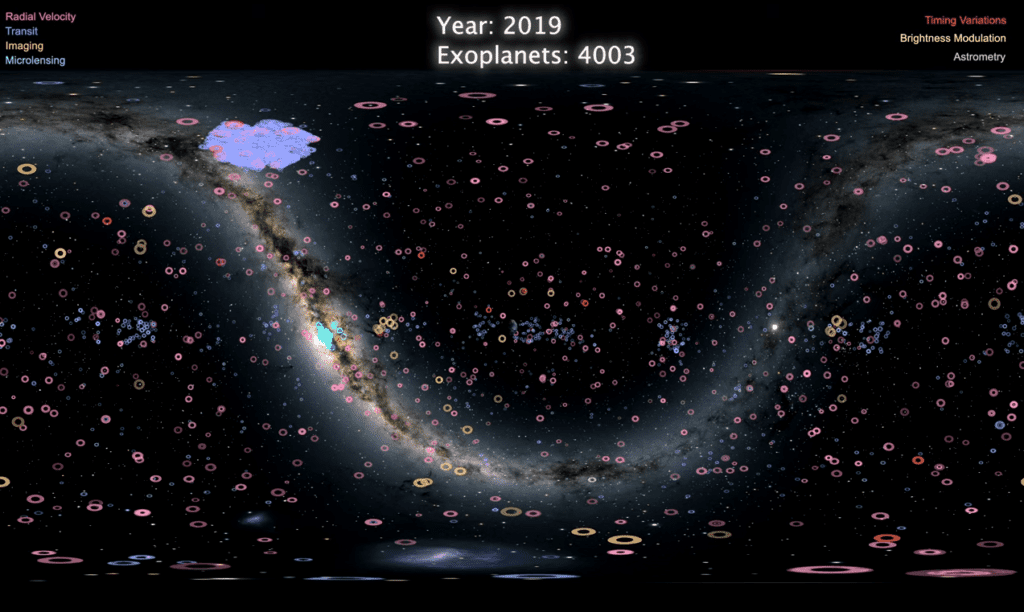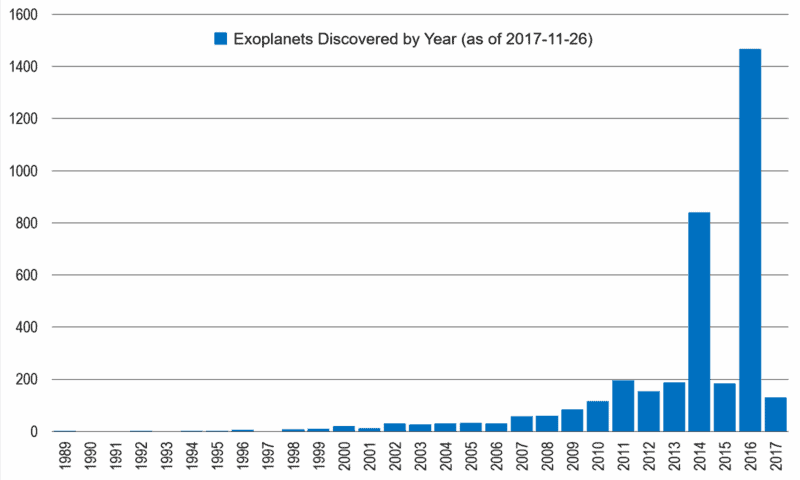NASA published this stunningly elaborate map depicting not only the 4003 exoplanets we know of along with the method through which they were developed.

It’s crazy to think about it, but up until the early 2000s, only a handful of exoplanets were discovered. Exoplanets (planets outside our solar system) have been discussed by philosophers and scientists for centuries, but it wasn’t until very late in the 20th century that their existence was confirmed.
Exoplanets stir our imagination about potential alien life and help us better understand the galaxy in which we live in. NASA’s map is an impressive visualization, showing not only where these maps are and how they were discovered, but also how this detection developed through time.
Oh, did I forget to mention? The map is a part of a time-lapse video published by NASA.
In recent years, our detection of exoplanets has been spearheaded by the Kepler Space Telescope, NASA’s now-retired orbital imaging craft. A whopping 2,extremely345 exoplanets have been discovered thanks to Kepler, with another 2,420 potential candidates still being analyzed. As astronomers comb through the data, there’s a very good chance that they will find even more exoplanets.
Despite Kepler’s unfortunate end, our hunt for exoplanets is still going strong. NASA’s Transiting Exoplanet Survey Satellite (TESS), launched in 2018, already has over 1,000 candidate exoplanets, including the smallest planet we’ve ever found.

Planets are extremely faint light sources compared to stars, which make their direct observation extremely difficult. Often times, stars are millions or even billions of times brighter than the light planets reflect — and in addition to this, the light from the stars causes a glare that washes out almost all the detectable light from the planet. As a result, very few extrasolar planets have been discovered directly.
Most commonly, planets are discovered through two indirect methods, both of which focus on interactions between the exoplanets and their parent star:
- radial velocity, where velocity measurements from the star produce detectable Doppler shifts in the planet’s

Diagram showing how an extrasolar planet orbiting a star could produce changes in position. Image via Wikipedia. parent star; and
- the transit method, where a planet passing between the Earth and its star produces a dip in the star’s luminosity, which can be used to infer rough characteristics about the planet.
Other planets were discovered with more exotic methods, including microlensing and pulsar timing variations.
Some of the discovered exoplanets have masses comparable to the Earth, and over 300 planets lie in the so-called “Habitable Zone” — the range of orbits around a star within which a planetary surface can support liquid water given sufficient atmospheric pressure. While we still can’t confirm the existence of extraterrestrial life on these planets, the possibilities are certainly tantalizing — and we can’t wait to see even more from NASA (and other space agencies).






